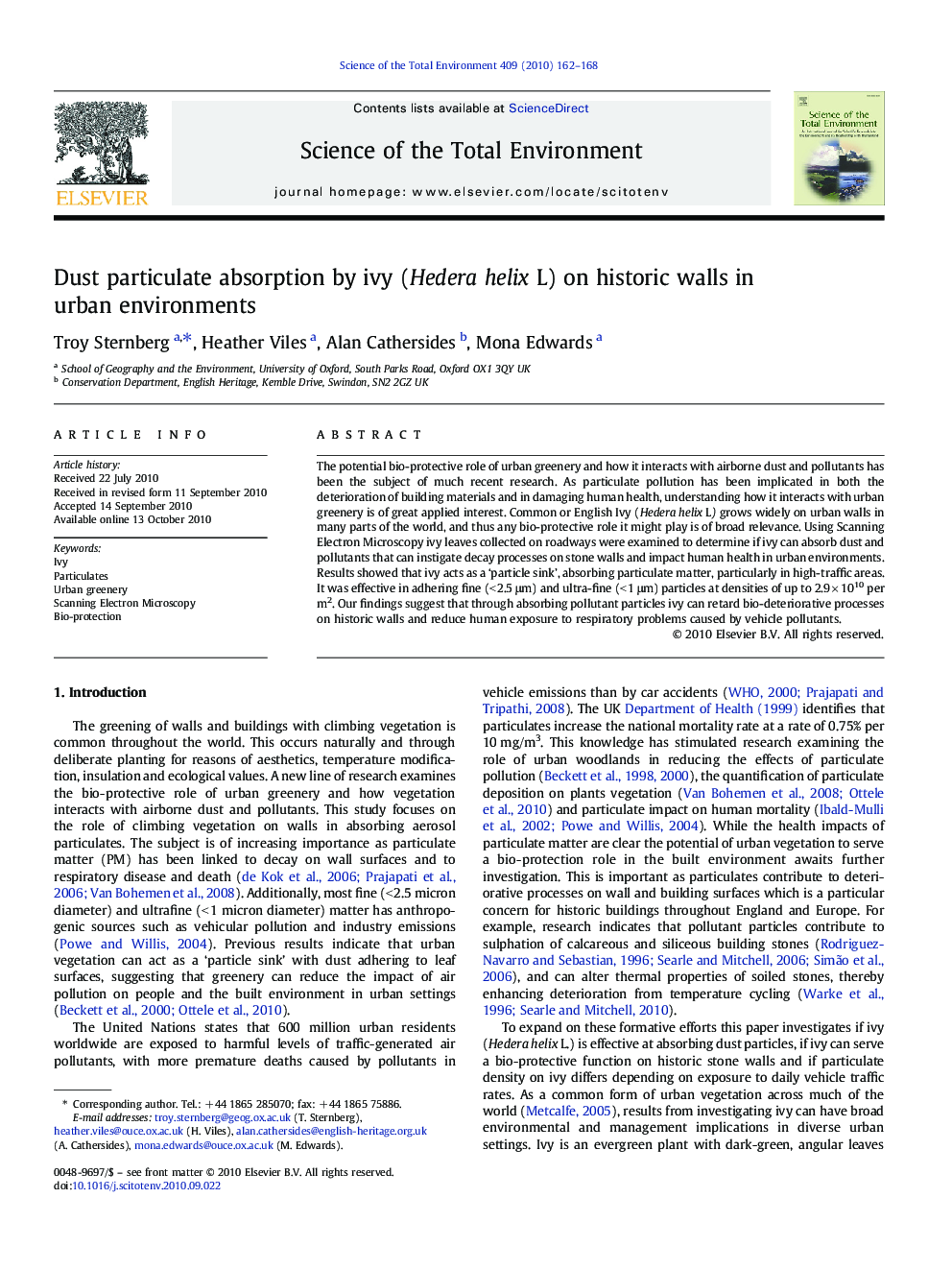| Article ID | Journal | Published Year | Pages | File Type |
|---|---|---|---|---|
| 4430303 | Science of The Total Environment | 2010 | 7 Pages |
The potential bio-protective role of urban greenery and how it interacts with airborne dust and pollutants has been the subject of much recent research. As particulate pollution has been implicated in both the deterioration of building materials and in damaging human health, understanding how it interacts with urban greenery is of great applied interest. Common or English Ivy (Hedera helix L) grows widely on urban walls in many parts of the world, and thus any bio-protective role it might play is of broad relevance. Using Scanning Electron Microscopy ivy leaves collected on roadways were examined to determine if ivy can absorb dust and pollutants that can instigate decay processes on stone walls and impact human health in urban environments. Results showed that ivy acts as a ‘particle sink’, absorbing particulate matter, particularly in high-traffic areas. It was effective in adhering fine (< 2.5 μm) and ultra-fine (< 1 μm) particles at densities of up to 2.9 × 1010 per m2. Our findings suggest that through absorbing pollutant particles ivy can retard bio-deteriorative processes on historic walls and reduce human exposure to respiratory problems caused by vehicle pollutants.
